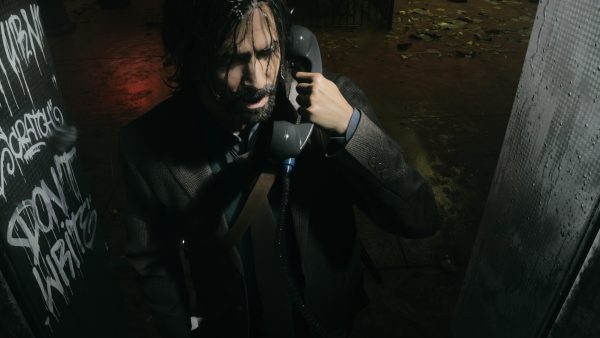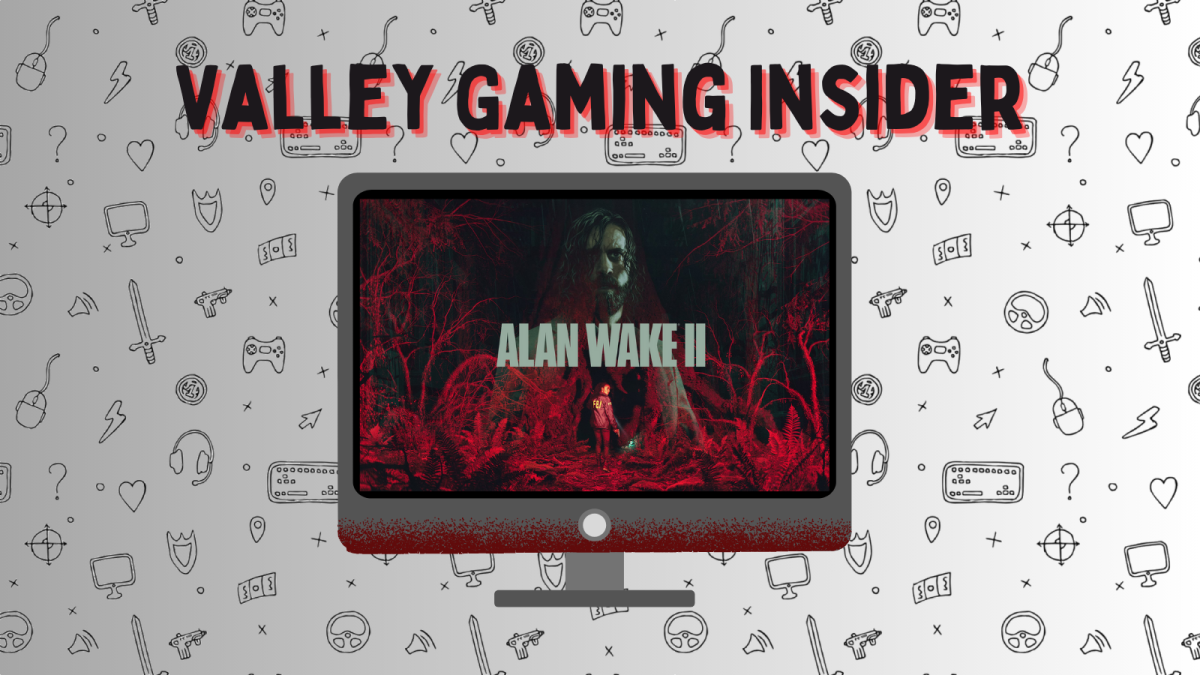“Alan Wake II” is Remedy Entertainment’s magnum opus.
This is Remedy’s first venture in survival horror gaming after making award-winning action games, which goes to show their storytelling scope.
The studio offers a terrifying multimedia experience that is second to none.
“Alan Wake II” is a sequel to “Alan Wake” (2010) and “Alan Wake’s American Nightmare” (2012). After being gone for just over 13 years, the characters pick up in real time.
In the original “Alan Wake,” the titular character is a famous crime story writer who is suffering from writer’s block after ending his critically-acclaimed crime series. To clear his mind, he goes on a trip with his wife to Bright Falls, Washington, where he stays at a cabin at Cauldron Lake.
Urban legends and creepy tales from this lake become a living nightmare for Wake, who discovers a mysterious manuscript of his that he doesn’t remember writing. The horrific content in it becomes real, which engulfs him in darkness, physically and mentally.
In “Alan Wake II,” the same darkness that Wake faces in the previous game, known as the “Dark Presence,” commences as people who have been missing for 13 years and have now been sighted at Cauldron Lake. Unfortunately, they seem to be lifeless, as a cult is sacrificing them for their twisted cause.
FBI Special Agent Saga Anderson and her partner Alex Casey are assigned to investigate the sightings of the missing people.
In the story, Alex Casey shares a name with one of Wake’s famous fictional NYPD officers. Players learn this after the real Casey is teased in the office for sharing his name with the popular fictional detective.
The game opens with Anderson and Casey exploring Cauldron Lake and questioning local law enforcement on the sightings and the cult. As the player, you control Anderson with her gameplay focused on her detective skills.
Players are able to go inside Anderson’s “Mind Place,” where notes and new information can be reviewed on her case board to make deductions.
From investigating areas, gathering clues and fending off foes, Anderson is a versatile character, perfectly suited for the horror that awaits her along the way.
A hallmark of any survival horror game is the limited amount of defense the player is given. This often includes common firearms, but because the theme of light overcoming darkness is highlighted, players are also provided with weapons against darkness.
Similar to the first game, flashlights and flares can be found to fend off “The Taken,” or people who have been turned into shadow-like silhouettes of their former selves. Half of the gameplay is fighting against these enemies, as players need to calculate the best approach when encountering large groups of them.
Waves of enemies, managing ammo and resources along with the claustrophobic and horrifying tone of the game, makes players feel terrified of what might lurk around the corner. The game justifiably punishes players for failing to be careful with resources.

The original game felt more like an action game with light horror motifs, but the sequel fully engrosses the player in a definitive survival horror experience.
While Anderson is the main point of view, the game also switches to Alan Wake at points, who is in “The Dark Place,” a different version of New York City. Wake tries to get out of his own nightmare that he’s been stuck in for years.
His gameplay also involves fighting “The Taken,” but since he is trapped in a world derived from his own writing, he is able to gain inspiration, writing various plot points in his “Mind Place.” Wake can also see memories of people involved from earlier in the manuscript, such as seeing Casey’s thoughts when entering a new scene or a conversation with a person of interest.
The pace of the game doesn’t break and players are always enticed as to what will happen next as they can switch between Anderson and Wake during certain chapters of the game.
The theme of duality is constant from beginning to end, and the lines are constantly blurred between reality and fiction. From the game’s plot, characters and gameplay, there is always someone or something that serves as a foil or juxtaposing counterpart.
This all coincides with the series’ entire theme of light versus darkness, with Remedy crafting a beautifully horrific and meaningful story.
Sam Lake, the lead director and writer of this game, provides a thought-provoking narrative that leads gamers to believe he is a seasoned horror writer; however, this game is the first survival horror project he’s worked on.
This game leans into psychological horror, but the twists and jump scares make any horror fan feel right at home.
This makes aspects of the game much more satisfying to experience, as the combination of the game graphics with live action characters adds to the uncanny eeriness that Alan Wake II evokes.
Remedy’s long lineage of games ranging from “Max Payne” (2001) to “Control” (2019) is demonstrated throughout “Alan Wake II,” as DNA from all their previous games are presented in this game.
Fans of Remedy games will be familiar with their gameplay style, but “Alan Wake II” still feels like an evolution of all their previous work.
Remedy has arguably mastered storytelling to the point where people who aren’t yet fans of their work will become infatuated with Saga Anderson and Alan Wake, along with the studio’s catalog of other great games.
The game is available now on PlayStation 5, Xbox Series X|S, and on PC through the Epic Games Store.






